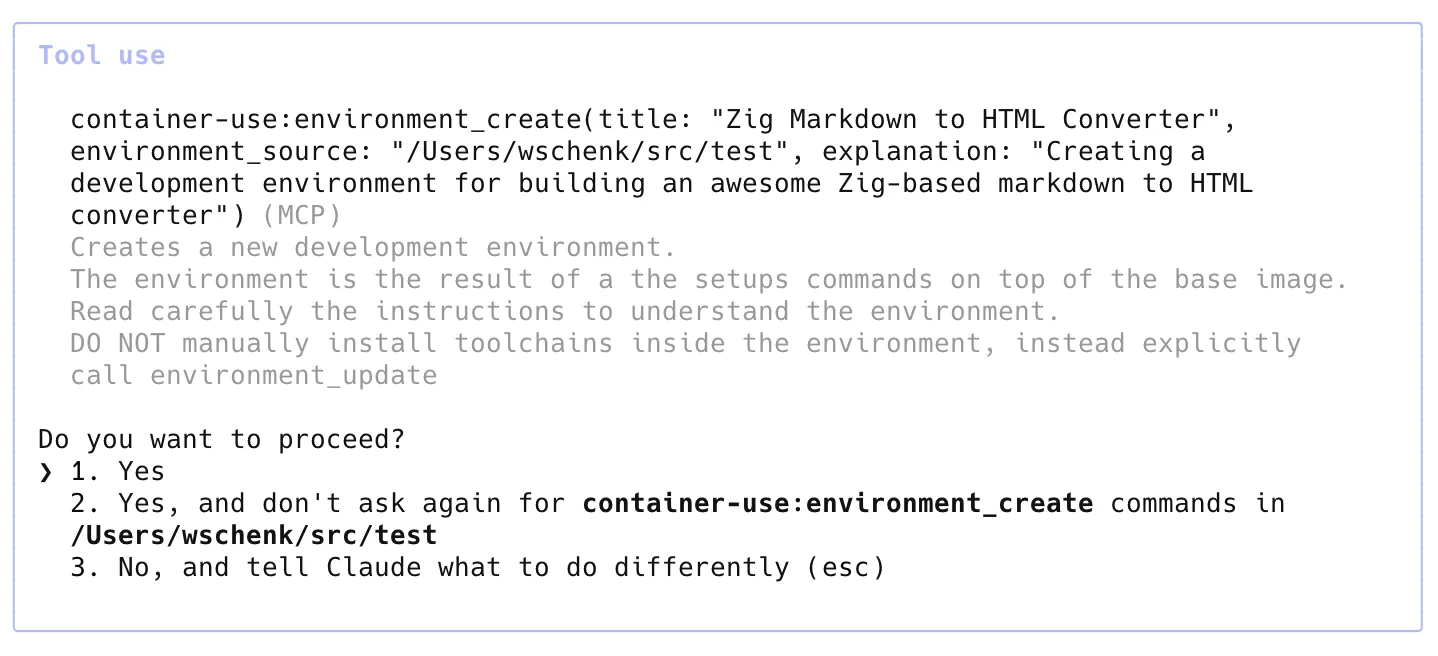Container Use lets each of your coding agents have their own containerized environment. Go from babysitting one agent at a time to enabling multiple agents to work safely and independently with your preferred stack.
Install
Lets check out dagger and container-use
brew install dagger/tap/dagger
brew install dagger/tap/container-useSetup the environment
mkdir myrepo
git init myrepoNow lets use containers!
# Add Container Use MCP server
cd /path/to/repository
claude mcp add container-use -- cu stdio
# Add agent rules (optional)
curl https://raw.githubusercontent.com/dagger/container-use/main/rules/agent.md >> CLAUDE.mdThen start up claude, and ask it to do something
make an awesome looking markdown to html converter using zig
And then it starts up its own development container:

This creates an isolated environment to build stuff. Why? I said to use zig, but I don’t have zig on my system. But it goes and setups the environment thats needed.
$ which zig
zig not foundGo to another terminal, and then start up another claude, and give it another task. You can then see them both running in their own environments:
cu list
ID TITLE CREATED UPDATED
uncommon-chamois Zig Hacker News Scraper 7 seconds ago 7 seconds ago
brief-calf Zig Markdown to HTML Converter 5 minutes ago 19 seconds agoSo we have 2 isolated environments, with everything that they need to do their job, working independently without messing up the host environment.
See what happened
$ cu checkout uncommon-cham?ois
Switched to branch 'cu-uncommon-chamois'
lsq
CLAUDE.md hn_scraper.zig hn_top_stories_20270.md$ cu checkout brief-calf
Switched to branch 'cu-brief-calf'
ls
build.zig final_output.html output.html
built_output.html markdown_converter_final.zig README.md
CLAUDE.md markdown_converter_fixed.zig
example.md markdown_converter.zig## Dagger
Launch it with
```shell
daggerStart up an alpine container:
container | from alpine | terminalThat’s cool.
Subscribe to our newsletter
What we offer
2024
